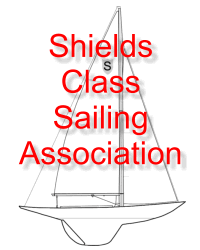Trailer Storage
Storage Preparation
If your trailer is be to stored for an extended period of time or over the winter, it is important that the trailer be prepared properly.
- Remove the emergency breakaway battery and store inside, out of the weather. Charge the battery at least every 90 days.
- Jack up the trailer and place jack stands under the trailer frame so that the weight will be off the tire. Follow trailer manufacturer’s guidelines to lift and support the unit. Never jack up or place stands on the axle tube or on the equalizers.
- Lubricate mechanical moving parts such as hitch, and suspension parts, that are exposed to the weather.
- Boat trailer axles are subject to repeated immersion. Before storing, remove brake drums; clean, dry and re-lubricate moving brake components; inspect bearings - clean and re-lubricate.
- On oil lubricated hubs the upper part of the roller bearings are not immersed in oil and are subject to potential corrosion. For maximum bearing life, it is recommended that you revolve your wheels periodically (every 2-3 weeks) during periods of prolonged storage.
After Prolonged Storage - Inspection Procedures
Before removing trailer from the jack stands:
- Remove all wheels and hubs or brake drums. Note which spindle and brake that the drum was removed from so that it can be reinstalled in the same location.
- Inspect suspension for wear.
- Check tightness of hanger bolt, shackle bolt, and U-bolt nuts per recommended torque values.
- Check brake linings, brake drums and armature faces for excessive wear or scoring.
- Check brake magnets with an ohmmeter. The magnets should check for 3.2 ohms. If shorted or worn excessively, they must be replaced.
- Lubricate all brake moving parts using a high temperature brake lubricant (LUBRIPLATE or Equivalent).

- Remove any rust from braking surface and armature surface of drums with fine emery paper or crocus cloth. Protect bearings from contamination while so doing.
- Inspect oil or grease seals for wear or nicks. Replace if necessary.
- Lubricate hub bearings. Refer to procedure in manual.
- Reinstall hubs and adjust bearings per instructions in manual.
- Mount and tighten wheels per instructions in manual.
Trailer Trip Preparation
Reference: Operation Maintenance Service Manual 600 - 8,000 lb. Axles & Related Components.
Dexter Axle290 Industrial Parkway East
Elkhart, IN 46516 574-295-7888
http://www.dexteraxle.com
Trip Preparation Checklist
There are a number of simple rules to follow in caring for your trailer axle assembly that can add to its life and in the case of some of these rules, you may be protecting your own life as well. Using the following checklist before starting a trip with your trailer is highly recommended. Some of these items should be checked 2-3 weeks prior to a planned trip to allow sufficient time to perform maintenance.
- Check your maintenance schedule and be sure you are up-to-date.
- Check hitch. Is it showing wear? Is it properly lubricated?
- Fasten safety chains and breakaway switch actuating chain securely. Make certain the breakaway battery is fully charged.
- Inspect towing hookup for secure attachment.
- Load your trailer so that approximately 10% of the trailers total weight is on the hitch. For light trailers this should be increased to 15%.
- Do Not Overload. Stay within your gross vehicle rated capacity (consult your trailers identification plate).
- Inflate tires according to manufacturer’s specifications; inspect tires for cuts, excessive wear, etc.
- Check wheel mounting nuts/bolts with a torque wrench. Torque, in proper sequence, to the levels specified in the manual.
- Make certain brakes are synchronized and functioning properly.
- Check tightness of hanger bolt, shackle bolt, and U-bolt nuts per torque values specified in manual.
- Check operation of lights.
- Check that your trailer is towing in a level position and adjust hitch height if required.
























